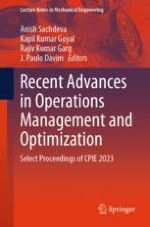The book presents the select proceedings of International Conference on Production and Industrial Engineering (CPIE) 2023. It covers the current and latest research methods for development and implementation of operation. Various topics covered include selection of designing parameters, decisions related to conditions of optimum process/operation parameters, facilities planning and management, transportation and supply chain management, quality engineering, reliability and maintenance, product design and development, human factors and ergonomics, project management, service system and service management, waste management, sustainable manufacturing, and operations. The book is useful for researchers and professionals working in manufacturing, industrial engineering, systems engineering, and production engineering.
